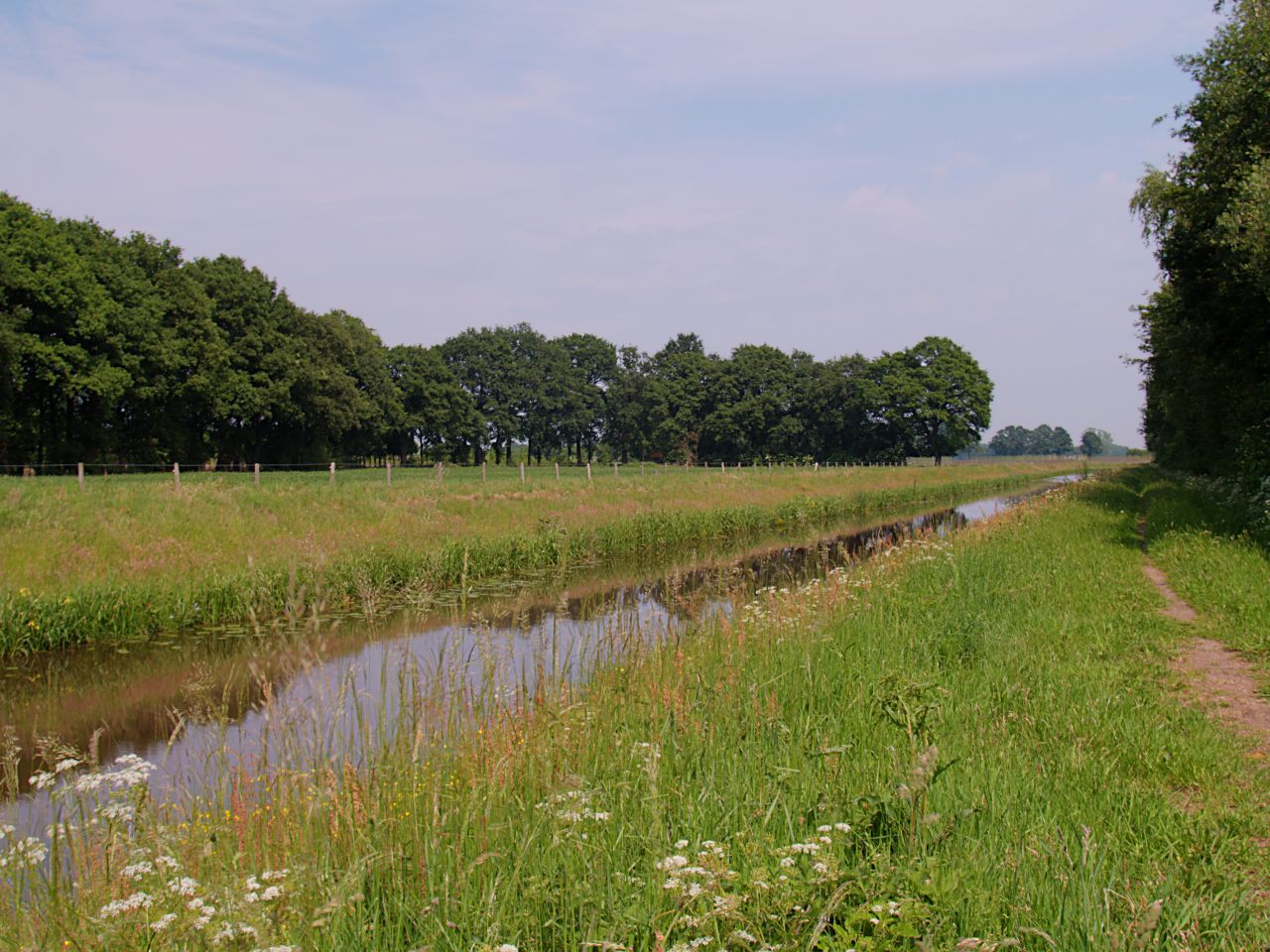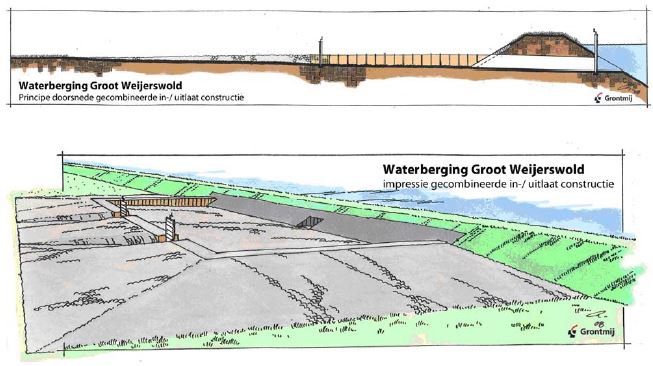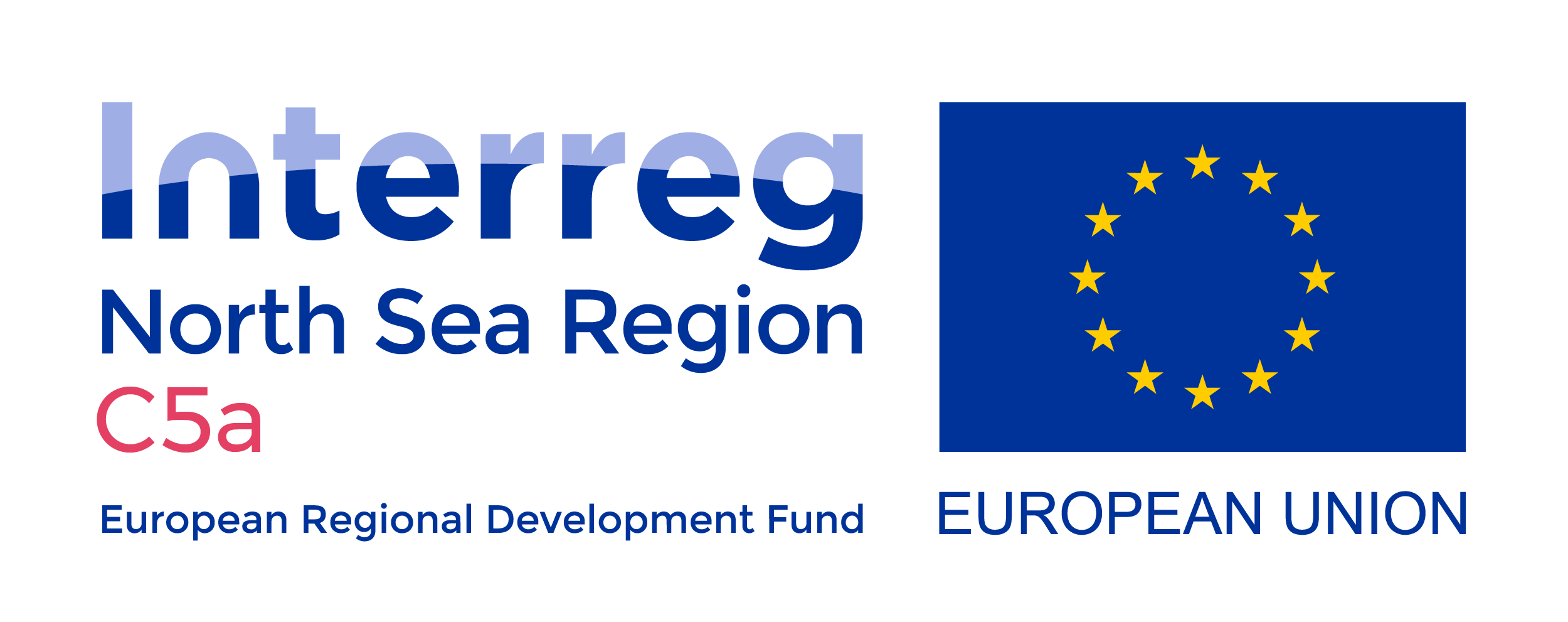Vi använder cookies för att webbplatsen ska fungera på ett bra sätt för dig. Genom att surfa vidare godkänner du att vi använder cookies.
Weijerswold
- Location: Province of Drenthe, the Netherlands, along the border with Germany
- Case Study Lead: Provincie Drenthe - Province of Drenthe
- Constituent Systems: Catchment and city
What is your case study about?
Flood protection has been part of city planning in the Province of Drenthe for over 20 years. In the city of Coevorden, plans for floodplains were drawn up several years ago but later reconsidered and decided that not all floodplains were needed. The floodplain Weijerswold was skipped in the plans of the Regional Water Authority of Vechtstromen because, under the climate conditions at the time, the floodplain was not a priority. Moreover, the farmers owning the land did not favor this location because they expected damage in times of flooding and diminished land. Despite this complex decision-making process, the Province decided to retain the area as a potential flood zone and spatial reservation.
Today, the city of Zwolle, which is downstream from Coevorden, is at high risk of flooding, and this has reactivated the dialogue about the benefits of floodplains upstream. In this case, the Cloud 2 Coast approach was applied to investigate the mutual benefits of storing water upstream in the catchment area instead of elevating the dikes downstream close to the city of Zwolle.
Which pillars have you focused on and why? How do you assess the pillars?
In the Coevorden/Weijerswold case, the whole system approach is implemented throughout the process. The pilot started with addressing the local impacts of a floodplain but further extended to a whole system perspective because of the connection with flood issues downstream in the city of Zwolle. Local measures in and around Zwolle, such as higher dikes, are costly and inflexible. Therefore, the potentially positive impact of smaller floodplains upstream are being studied, together with other benefits such as storing water during drought periods, improving local water management, finding combinations in the near future with land use change (nature restoration). In summary, an integrated solution is currently being sought with a coherent outlook with broader portfolio issues, such as to cut down the nitrogen emission, green transition, water shortage and water quality, which is taken into account.
Also, the adaptive approach is an important issue in building flood resilience. Because the impact of climate change is partly uncertain, the solutions should be flexible. Using different storage areas in different locations within the catchment area brings that flexibility in time and costs.
This also means that a continuous dialogue is needed between the involved authorities to aim to find the right solutions and implement them at the right time. Since the pilot, the Province of Drenthe is also part of the dialogue of the catchment-based project for the Vecht River. The water storage areas around Coevorden are now again part of the possible solution to adapt to the impact of climate change.


What have been the benefits of applying those pillars?
Adaptability is the most significant benefit from the Cloud-2-Coast approach in the Coevorden/Weijerswold case. The solution offers a more flexible route, considering different climate scenarios and with the lowest social costs. It also combines other environmental and climate issues with a spatial impact, such as space for energy, organic farming and nature development. The Cloud-2-Coast approach will also influence the regulation of water discharge from Germany. In an old and existing agreement, concurrence was only mentioned regarding the size of the river crossing the border but not on the amount of water discharge. Following heavy precipitation events, such an agreement does not encourage water retention on the German side. It now seems timely to also review this agreement.
The question is if the solutions so far, in the surroundings of Coevorden, are enough to cope with the long-term impact of climate change when considering the whole catchment area.
Rinke van Veen




